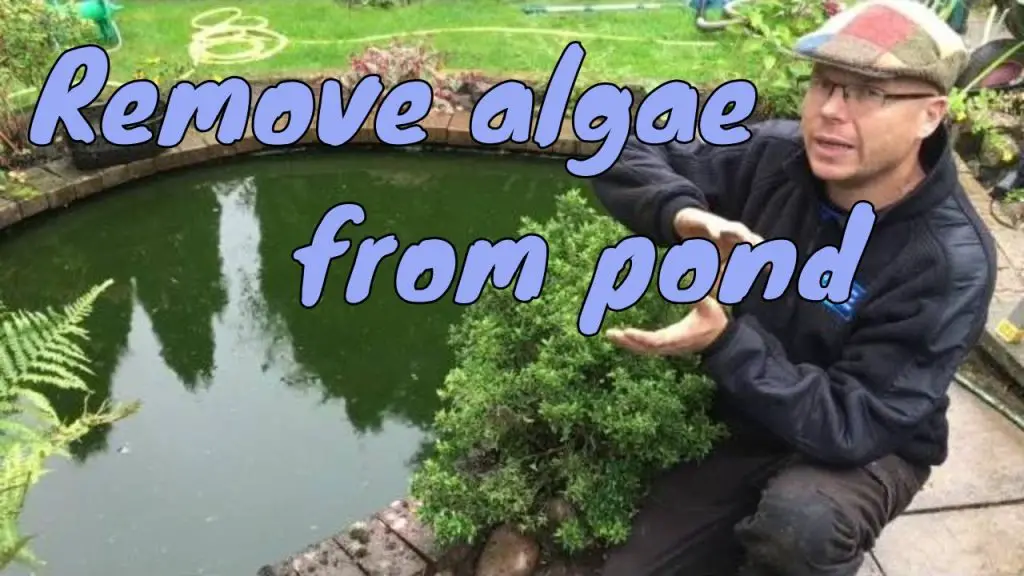Algae can be a common problem in ponds, especially when fish are present. While some algae is normal and even beneficial for a pond ecosystem, an overgrowth of algae can lead to poor water quality and harm the fish. If you’re dealing with excessive algae in your pond with fish, there are several strategies you can use to get rid of it effectively.
1. Maintain a Balanced Ecosystem
One of the key ways to control algae growth in a pond with fish is to maintain a balanced ecosystem. This includes ensuring that you have the right mix of plants, fish, and other organisms in your pond. Having a variety of aquatic plants can help to absorb excess nutrients in the water, which can limit algae growth.
2. Limit Sunlight Exposure
Algae thrives on sunlight, so one way to combat its growth is to limit the amount of sunlight that reaches the pond. You can do this by strategically placing floating plants or installing a shade sail over part of the pond to provide some shade. This can help reduce the amount of sunlight available for algae to photosynthesize and grow.
3. Install a Water Feature
Adding a water feature like a fountain or waterfall to your pond can help to improve water circulation and aeration. Increased oxygen levels in the water can benefit fish and other aquatic organisms while making the environment less hospitable for algae. The movement of the water can also help to disrupt algae growth and prevent it from forming thick mats.
4. Use Barley Straw
Barley straw is a natural and effective way to control algae in a pond with fish. When barley straw decomposes in water, it releases compounds that can inhibit the growth of algae. You can place barley straw bales or pellets in your pond to help prevent algae blooms and keep the water clear.
5. Introduce Algae-Eating Fish
One of the most natural ways to control algae in a pond with fish is to introduce algae-eating fish species. Fish like koi, goldfish, and certain types of catfish can help to keep algae levels in check by consuming it as part of their diet. Be sure to research the specific needs and compatibility of these fish species with your existing fish population before adding them to your pond.
6. Perform Regular Water Tests
Regularly testing the water in your pond can help you monitor key parameters like pH, ammonia, nitrites, and nitrates. An imbalance in these levels can contribute to algae growth and harm fish health. By conducting routine water tests, you can identify any issues early on and take corrective action to prevent algae outbreaks.
7. Use Algaecides Sparingly
While algaecides can be effective at quickly eliminating algae, they should be used sparingly and with caution in a pond with fish. Some algaecides contain chemicals that can be harmful to fish and other aquatic life if not used properly. If you choose to use an algaecide, be sure to follow the instructions carefully and consider alternative methods first.
8. Clean and Maintain Filters
Filters play a crucial role in maintaining water quality in a pond with fish. Regularly cleaning and maintaining your pond filters can help to remove debris, excess nutrients, and algae from the water. This can prevent algae from taking hold and keep your pond clear and healthy for your fish.
9. Reduce Fish Feeding
Overfeeding fish can lead to excess waste and nutrients in the water, which can fuel algae growth. By reducing the amount and frequency of fish feeding, you can help to limit the nutrients available for algae to thrive. Feed your fish only what they can consume in a few minutes to prevent leftover food from accumulating in the pond.

Credit: m.youtube.com
10. Consider Beneficial Bacteria
Beneficial bacteria products can help to break down organic matter, reduce nutrient levels, and improve water quality in a pond with fish. These bacteria can outcompete algae for nutrients and create a healthier environment for fish. Look for products specifically designed for pond use and follow the instructions for best results.

Credit: www.wikihow.com
Conclusion
Algae can be a nuisance in ponds with fish, but by implementing a combination of strategies, you can effectively control its growth and maintain a healthy pond ecosystem. From maintaining a balanced ecosystem to using natural solutions like barley straw and algae-eating fish, there are many ways to keep algae in check without harming your fish. By following these tips and staying proactive in your pond maintenance, you can enjoy a clear and beautiful pond that is a safe and thriving habitat for your fish.





